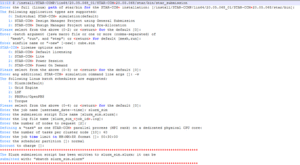Every year, there are three releases for Simcenter STAR-CCM+. The third one for this year is just around the corner.
There are quite a few new features, both big and small. Today we wanted to highlight some of the features that we believe will be exciting!
More efficient data handling
Firstly, we can now save our data on the resampled volume to the history files. This means that you can reduce the amount of data we save for 3D visualisations. That might sound like something small, but let me tell you, those files can be HUGE. Cutting down on their size is great news for every engineer that is running big simulations on a cluster, in the cloud, and for anyone who had to wait ages for their data to become available for postprocessing.
Dynamic 3D results
Secondly, an improvement is that we can now animate the scene files we share with the customer. Animated visualisations are cool, but flat. With this addition to the feature list, we can show what happens in 3D. This means that you do not need any additional software to be able to show this to your customers!
Automatic script for clusters
Thirdly, we have to mention that there is now an option to automatically create a job launching script for your cluster through guided questions. No more endless debugging to get your script up and running through some half-baked examples. You can now generate your own cluster job-launching script easily and automatically!

Smarter modeling with phase replacement
Last but not least, the fourth feature we definitely wanted to mention is the generalised phase replacement model added to this new version of Simcenter STAR-CCM+ 2510. When modelling droplets, you can now have them disappear when they reach areas that are no longer of interest. This will reduce the amount of refinements needed, speeding up your simulation!
Discover more
Of course, this is only a selection of features from the latest update that Femto thinks is important for your everyday workflow; for the full list, follow this link to the Siemens article about all these exciting new features that may also apply to your Simcenter STAR-CCM+ workflow.



